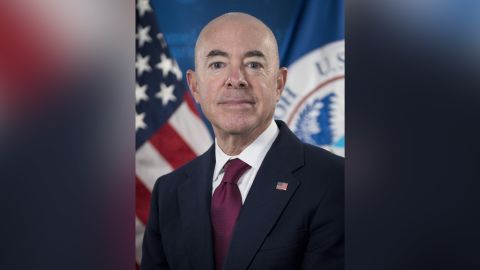Editor’s Note: Alejandro Mayorkas is the secretary of homeland security. The opinions in this commentary are his own. Read more opinion at CNN.
CNN —
Football watch parties saw unexpected interruptions recently when low flying drones over the gridiron forced NFL and college football games to stop. In both instances, the drones flew away without incident and there was no risk to fans attending, but each demonstrates the potential public safety threat unmanned aircraft systems (UAS) or “drones” pose to the public, and the need for tools to address it.

Drones have become ubiquitous and are helping Americans do everything from capturing epic sunsets over the Grand Canyon to fighting wildfires and assessing the damage caused by natural disasters like Hurricane Ian. This technology is helping make our economy more efficient and our communities safer, but even a seemingly harmless drone creates grave danger when flown in the wrong place or when in the hands of a person with nefarious intent.
As Americans travel at pre-pandemic numbers and return to sporting events, music festivals and other large gatherings, those risks escalate.
Though unmanned aircraft systems can be small in size, the risk is increasing due to their growing sophistication, speed and widespread availability. Experts predict that global shipment of drones will hit 2.91 million in 2023.
Their increased availability comes with very real consequences for public safety and security. In recent years, we have witnessed bad actors abroad weaponize drones to attempt assassinations of heads of state, attack authorities and attack critical infrastructure. The US Secret Service has encountered hundreds of drones violating temporary flight restrictions that protect high-ranking officials. Air travel domestically has also been affected.
At least 33 full or partial suspensions of airport operations have occurred since 2019 as a result of drones entering flight paths, causing millions of dollars of economic damage. Drones have collided with helicopters used by the police, the military and first responders.
The energy and chemical sectors regularly report suspicious activities related to drone flights. In 2020, a crashed drone outside an electrical substation in Pennsylvania was found to have modifications likely designed to disrupt the grid. Last year alone, 235 suspicious drone flights were reported at or near chemical plants in Louisiana. Authorities are also aware of suspicious flights near oil storage facilities in Oklahoma and natural gas facilities in Texas.
Transnational criminals use drones in an attempt to ferry illicit narcotics and contraband over US borders and to conduct hostile surveillance of law enforcement on a near-daily basis. From August 2021 to May 2022, for instance, US Customs and Border Protection detected more than 8,000 attempted illegal cross-border drone flights.
We know of and mitigate these threats thanks to current authority to counter unmanned aircraft systems. In fact, DHS has safely protected our missions, the President and the public over 300 times, and we have worked with the FAA to minimize impact to the national airspace system – all while protecting individuals’ privacy, civil rights and civil liberties.
But our current authority is limited and could lapse. TSA spotted nearly 2,000 drones around airports in the last year, of which 63 incidents required pilots take evasive action; however, neither TSA nor state and local law enforcement can stop those drones under current law. During a recent drone incident at a professional football game in Seattle, local authorities did not have the equipment or authority necessary to prevent the drone from entering the restricted airspace above the stadium. It was fans who spotted the device and informed NFL officials. Building partnerships with local law enforcement agencies will be necessary to detect and mitigate threats going forward.
We are grateful that Congress recently passed a temporary measure to maintain our current ability to identify, detect and reduce the risk of drones through December, but a short-term extension of the status quo is not a permanent solution for this growing threat. The ability of the private sector, and federal, state and local governments to mitigate the risk drones create depends on Congress enabling the Biden Administration’s Domestic Counter-Unmanned Aircraft Systems National Action Plan and passing bipartisan C-UAS legislation.
The law would better reinforce our critical infrastructure, including our nation’s transportation system, from drone threats. It would help us work closely with state and local officials to detect dangerous drones and launch a pilot program to implement counter drone protection activities with close oversight from the Department of Homeland Security and Department of Justice to ensure they adhere to federal privacy, civil rights and civil liberties protections.
Swift Congressional action is necessary to create a more permanent solution to responding to threats from drones being operated in a reckless or nefarious manner in the ever-changing risk environment we see today. The failure to continue to empower the government to address this clear and present threat to our homeland would be simply unacceptable. Protecting public safety is our top priority, and it is a responsibility we all share. We hope Congress agrees and acts swiftly this year.


